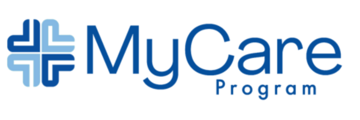Brief Overview: Diverticulosis is characterized by the presence of diverticula (small, sac-like protrusions) in the lining of the intestines. Diverticula are most often located in the colon.
Prevalence: According to UpToDate, “The prevalence of diverticulosis increases with age from less than 20% at age 40 to 60% by age 60. The number and size of diverticula also increase with age, suggesting that diverticulosis is a progressive process.”
Etiology: The etiology is unknown.
Risk Factors:
- Age > 60
- Smoking
- Male
- Elevated BMI
Commonly Associated Conditions:
- Diverticulitis
- IBS
- Constipation
Common Medications:
- Typically, treatment is not necessary. Fiber supplements, antispasmodics, or stool softeners may be recommended.
Common Labs, Imaging, and Tests:
- CBC
- Colonoscopy
- Flexible sigmoidoscopy
- CT scan or ultrasound of the abdomen
- X-ray following a barium enema
- Stool test
Common Symptoms:
- Can be asymptomatic
- Bloating
- Constipation
- Abdominal cramps
- Painless rectal bleeding
Common Treatments:
- Treatment may not be needed
- Increased dietary fiber
Physical Findings:
- Diverticulosis is found on colonoscopy or other imaging studies
- Abdominal pain/tenderness may be present
Potential Complications and Contraindications:
- Diverticulitis
- GI bleeding
- Bowel perforation
- Bowel stricture
- Abscess
- NSAIDs can increase the risk of bleeding and diverticulitis. Talk with your healthcare provider about if you should avoid NSAIDs
General Health and Lifestyle Guidance:
- Go to the restroom as soon as you feel the urge to have a bowel movement. Do not “hold it”
- Maintain adequate hydration (discuss hydration needs with your healthcare provider)
- Exercise as tolerated. Make sure to discuss exercise with your healthcare provider first.
- Consume adequate fiber in your diet. Foods that are high in fiber include fruits, vegetables, and some grains. Talk to your healthcare provider about any fiber supplementation recommendations.
- Ask your healthcare provider if a probiotic is recommended
- Regular colon screenings as recommended by your healthcare provider
Suggested Questions to Ask Patients:
- Have you ever been told you have diverticulosis or diverticulitis?
- Have you been told to follow a high-fiber diet?
- Do you have frequent constipation or bloating?
- Have you had a recent colonoscopy?
- Are you experiencing any abdominal pain or changes in bowel habits?
Suggested Talking Points:
- Educate re: symptoms of diverticulitis: fever, pain (typically lower abdominal), change in bowel habits, nausea, vomiting
- Diverticulosis is typically asymptomatic
- Notify your healthcare provider of any new or worsening symptoms
Brief Description of Diverticular Diseases:
- Diverticulitis – inflammation of one or more diverticula. This is an acute process and typically painful. Can be treated inpatient or outpatient based on the specific findings.
- Diverticular Bleeding – painless bleeding in the stool. Typically requires hospitalization
- Symptomatic Uncomplicated Diverticular Disease (SUDD) – persistent abdominal pain related to diverticula, but without overt colitis or diverticulitis
- Segmental Colitis associated with diverticulosis (SCAD) – also called diverticular colitis, chronic inflammation of areas of the left colon with diverticulosis. This is a rare manifestation of diverticulosis and overlaps with IBD
Sources:
